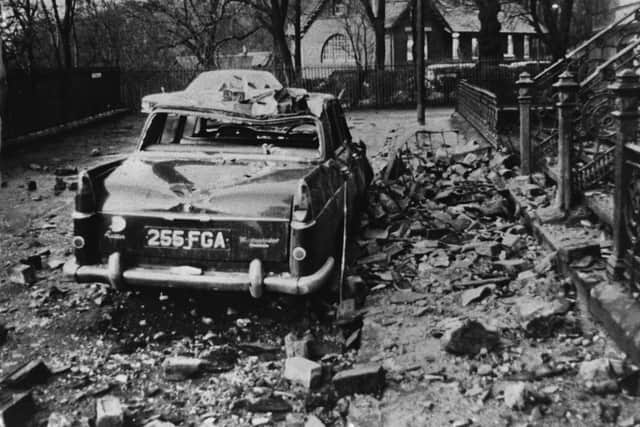Storms Scotland: Remembering Scotland's deadly storm of 1968 which no one knew was coming
It was described as something like the Clydebank Blitz as houses were reduced to tonnes of rubble in the streets, chimneys fell into bedrooms and roofs were torn from houses where residents slept, completely unprepared for the storm.
Code-named Low Q, the storm, which battered the Central Belt in 1968 and killed 20, left 700 homeless and led to the demolition of more than 4,000 council homes, had taken forecasters by pure surprise.
Advertisement
Hide AdAdvertisement
Hide AdBut on the morning of Monday, January 15, the scale of its impact was laid bare. The army was called in, Queen Elizabeth II sent a message of condolence and people slept in public halls to await news of where they would be housed next.


The devastation followed wind speeds of 103mph in Glasgow Airport – the highest recorded since records began after World War Two – and 118mph in Tiree. The Forth Road Bridge was closed for the first time following a gust of 110mph.
The storm began as a cold front near Bermuda before deepening on its travels over the Azores and dramatically plunging in pressure ahead of its unannounced arrival on the west coast. Here, Scotland’s geography further intensified the storm.
A spokesman for the Met Office said at the time: "The gales were made worse in the industrial belt by the tunnelling created by the Clyde-Forth Valley. This accentuated the winds and made them stronger, causing the damage.”
Tom Fagan, then chairman of Albion Rovers football club, had another set of words to describe the aftermath. “You’d think a bomb had landed on Cliftonhill,” he said.
In Glasgow, nine people died. Among them were four people pulled from beneath tons of rubble after a chimney stack toppled on a tenement in Dumbarton Road. An elderly couple were killed in their beds in Edinburgh when a chimney head fell through the ceiling of their bedroom.
At Greenock, three men drowned after their dredger capsized in the Clyde. One witness described how the ropes “snapped like shoelaces”, leaving it adrift in the Firth of Clyde.
Over in Bonhill in Dunbartonshire, a man died when his car ploughed into a fallen tree as he drove his expectant wife to hospital. She later gave birth to a baby boy. Fatalities were also recorded in Kirkintilloch, Lugton and Cambuslang, with hundreds of injuries treated.
Advertisement
Hide AdAdvertisement
Hide AdMore than 2,000 workers from Glasgow Corporation were drafted in to clear up the city, along with soldiers from the 1st Batallion Cameronians and the Royal Highland Fusiliers.
The job at hand was immense – 16 buildings collapsed, 1,154 chimney stacks fallen, 37 roofs destroyed, 103 plate glass windows smashed and more than 30 trees uprooted.
An estimated 70,000 Glasgow council houses needed repair, with Lord Provost John Johnston issuing a list of tenement blocks to be demolished. A total of 4,040 were written off.
Queen Elizabeth II sent “deepest sympathies to those who have suffered in the devastation”. The aftermath of the storm was felt for months after the winds had blown east with a long, painful re-homing process displacing victims to Grangemouth, Whitburn, and the new towns of Glenrothes and East Kilbride.
Comments
Want to join the conversation? Please or to comment on this article.
